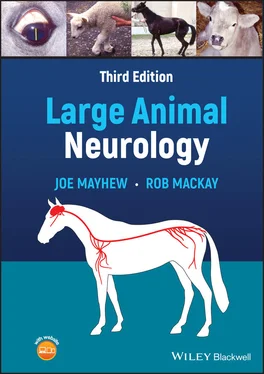406 404
407 405
408 406
409 407
410 408
411 409
412 410
413 411
414 412
415 413
416 414
417 415
418 416
419 417
420 418
421 419
422 420
423 421
424 422
425 423
426 424
427 425
428 426
429 427
430 428
431 429
432 430
433 431
434 432
435 433
436 434
437 435
438 436
439 437
440 438
441 439
442 440
443 441
444 442
445 443
446 444
447 445
448 446
449 447
450 448
451 449
452 450
453 451
454 452
455 453
456 454
457 455
458 456
459 457
460 458
461 459
462 460
463 461
464 462
465 463
466 464
467 465
468 466
469 467
470 468
471 469
472 470
473 471
474 472
475 473
476 474
477 475
478 476
479 477
480 478
481 479
482 480
483 481
484 482
485 483
486 484
487 485
488 486
489 487
490 488
491 489
492 490
493 491
494 492
495 493
496 494
497 495
498 496
499 497
500 498
501 499
502 500
503 501
504 502
505 503
506 504
507 505
508 506
509 507
510 508
511 509
512 510
513 511
514 512
515 513
516 514
517 515
518 516
519 517
520 518
521 519
522 520
523 521
524 522
525 523
526 524
527 525
528 526
529 527
530 528
531 529
532 530
533 531
534 532
535 533
536 534
537 535
538 536
539 537
540 538
541 539
542 540
543 541
544 542
545 543
546 544
547 545
548 546
549 547
550 548
551 549
552 550
553 551
554 552
555 553
556 554
557 555
558 556
559 557
560 558
561 559
562 560
563 561
564 562
565 563
566 564
567 565
568 566
569 567
570 568
571 569
572 570
573 571
574 572
575 573
576 574
577 575
578 576
579 577
580 578
581 579
582 580
583 581
584 582
585 583
586 584
587 585
588 586
589 587
590 588
591 589
592 590
593 591
594 592
595 593
596 594
597 595
598 596
599 597
600 598
601 599
Third edition
I. G. Joe Mayhew
Massey University
Palmerston North, NZ
Robert J. MacKay
University of Florida
Gainesville, Florida, USA

This edition first published 2022 © 2022 John Wiley & Sons Ltd
Edition History John Wiley & Sons Ltd (2e, 2008), Lea & Febiger (1e, 1989)
All rights reserved. No part of this publication may be reproduced, stored in a retrieval system, or transmitted, in any form or by any means, electronic, mechanical, photocopying, recording or otherwise, except as permitted by law. Advice on how to obtain permission to reuse material from this title is available at http://www.wiley.com/go/permissions.
The right of I G Mayhew and Rob MacKay to be identified as the authors of this work has been asserted in accordance with law.
Registered Offices John Wiley & Sons, Inc., 111 River Street, Hoboken, NJ 07030, USA John Wiley & Sons Ltd, The Atrium, Southern Gate, Chichester, West Sussex, PO19 8SQ, UK
Editorial Office 9600 Garsington Road, Oxford, OX4 2DQ, UK
For details of our global editorial offices, customer services, and more information about Wiley products visit us at www.wiley.com.
Wiley also publishes its books in a variety of electronic formats and by print‐on‐demand. Some content that appears in standard print versions of this book may not be available in other formats.
Limit of Liability/Disclaimer of Warranty The contents of this work are intended to further general scientific research, understanding, and discussion only and are not intended and should not be relied upon as recommending or promoting scientific method, diagnosis, or treatment by physicians for any particular patient. In view of ongoing research, equipment modifications, changes in governmental regulations, and the constant flow of information relating to the use of medicines, equipment, and devices, the reader is urged to review and evaluate the information provided in the package insert or instructions for each medicine, equipment, or device for, among other things, any changes in the instructions or indication of usage and for added warnings and precautions. While the publisher and authors have used their best efforts in preparing this work, they make no representations or warranties with respect to the accuracy or completeness of the contents of this work and specifically disclaim all warranties, including without limitation any implied warranties of merchantability or fitness for a particular purpose. No warranty may be created or extended by sales representatives, written sales materials or promotional statements for this work. The fact that an organization, website, or product is referred to in this work as a citation and/or potential source of further information does not mean that the publisher and authors endorse the information or services the organization, website, or product may provide or recommendations it may make. This work is sold with the understanding that the publisher is not engaged in rendering professional services. The advice and strategies contained herein may not be suitable for your situation. You should consult with a specialist where appropriate. Further, readers should be aware that websites listed in this work may have changed or disappeared between when this work was written and when it is read. Neither the publisher nor authors shall be liable for any loss of profit or any other commercial damages, including but not limited to special, incidental, consequential, or other damages.
Library of Congress Cataloging‐in‐Publication Data applied for [HB ISBN: 9781119477037]
Cover Design: Wiley
Cover Images: Courtesy of Quentin Roper, Courtesy of Joe Mayhew
For this third edition of Large Animal Neurology , we have enlisted Rob MacKay as coauthor to help us keep up with current trends and to maintain a reasonably worldwide—albeit somewhat Anglosphere—perspective.
As with previous editions, the general structure of the book consists of three parts. Part I( Chapters 1– 4) covers the background disciplines required for the evaluation of neurologic cases; Part II( Chapters 5– 30) provides concise overviews of the commonly encountered, major clinical presenting scenarios; and Part III( Chapters 31– 38) offers an extensively resourced discourse of most neurologic diseases of domestic large animals following an etiologic category. Readers thus can approach the text with a view to updating their evaluation of suspected clinical neurologic patients ( Part I), with a specific clinical syndrome in mind ( Part II), or to delve into details on most of the specific neurologic diseases of large domestic animals ( Part III).
Since the second edition of 2008, genetics and modern imaging techniques, in particular, have had a major impact on large animal neurology. Despite their profound utility, these diagnostic tests are not perfect. Thus, even dramatic and clearly defined changes seen on an MR or a CT image of a patient with a neurologic syndrome does not always indicate cause and effect. Likewise, as our genetic modeling of many diseases unravels, particularly of those with complex genetic characteristics, identifying a genetic association with a particular disorder does not mean that the patient’s signs are due solely to that inborn—or even acquired—genetic fingerprint. Therefore, as with all diagnostic ancillary aids we use, the results must be taken in conjunction with the results of repeated examinations to help formulate the most appropriate diagnostic and therapeutic plans. It also must be considered before undertaking any test, whether the results, considering their margin of error, will inform clinical management to a degree that benefit outweighs risk and cost. Otherwise, we might be better off not undertaking them.
Читать дальше













